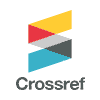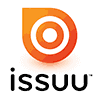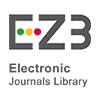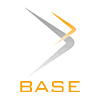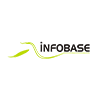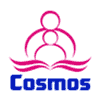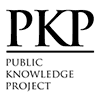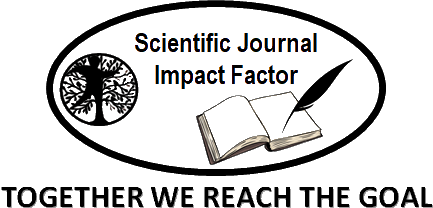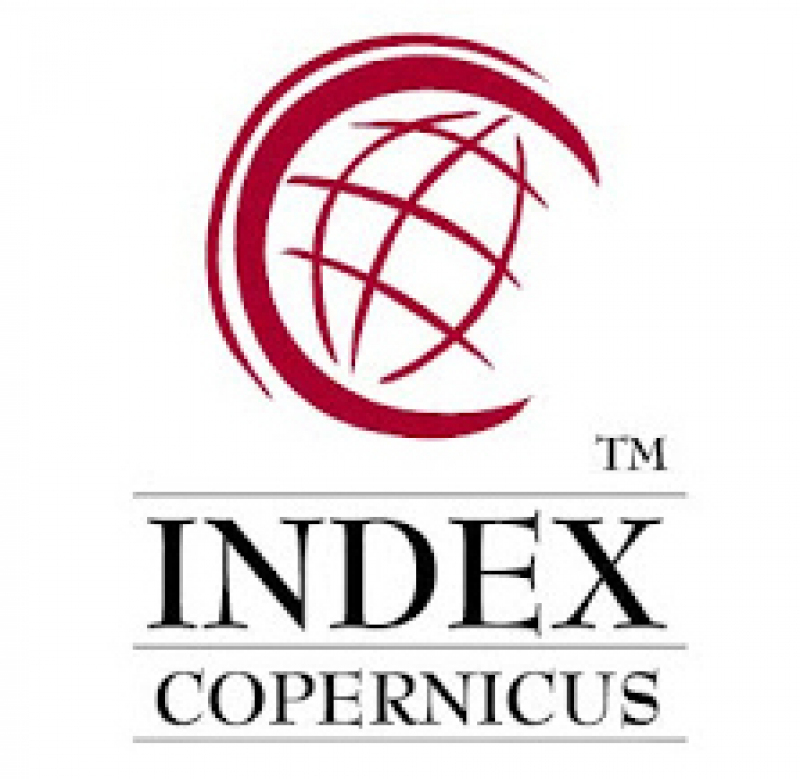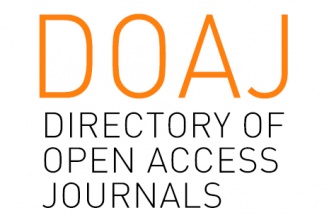Improving Students' Conceptual Understanding and Mathematical Connections Using the CORE (Connecting, Organizing, Reflecting, Extending) Learning Model
Abstract
This research aims to examine and describe: (1) the effect of CORE learning model on students' conceptual understanding and mathematical connection skills; (2) the superiority of CORE learning model in terms of students' conceptual understanding skills; and (3) the superiority of CORE learning model in terms of students' mathematical connection skills. The type of research used that conducted at SMA Negeri 1 Langke Rembong is a quasi-experimental study. The population of this study consisted of all grade XI students and the samples included classes X-B and X-D, each comprising 30 students. Data collection methods included mathematical concept understanding and mathematical connection abilities test consisting of five essay questions. The research instruments were validated by experts and proven reliable. A comparison test of two mean vectors using test statistic and a significance level of was used to determine the effect of the learning model. The superiority test between the CORE learning model and the Direct Instruction (DI) model used an independent sample t-test statistic. The results of this test also showed the superior learning model for each ability. The results showed that at a significance level of : (1) the CORE learning model had a simultaneous effect on conceptual understanding and mathematical connection; (2) the CORE model was superior to the DI learning model in terms of students' conceptual understanding; and (3) the CORE model was superior to the DI learning model in terms of students' mathematical connection.
Keywords
Full Text:
PDFReferences
Agustianti, R. & Amelia, R. (2018) Analisis Kemampuan Koneksi Matematis Siswa dengan menggunakan Model Pembelajaran CORE (Connecting, Organizing, Reflecting, Extending). JPMI-Jurnal Pembelajaran Matematika Inovatif, 1(1), 1-6.
Alabdulaziz, M. S. (2022). The effect of using PDEODE teaching strategy supported by the e-learning environment in teaching mathematics for developing the conceptual understanding and problem-solving skills among primary stage students. Eurasia Journal of Mathematics, Science and Technology Education, 18(5), 1-18. https://doi.org/10.29333/ejmste/12019
Al-Mutawah et al. (2019). Conceptual Understanding, Procedural Knowledge and Problem-Solving Skills in Mathematics: High School Graduates Work Analysis and Standpoints. International Journal of Education and Practice, 7(3), pp. 258-273. https://10.18488/journal.61.2019.73.258.273
Annizar, A. M., Maulyda, M. A., Khairunnisa, G. F., & Hijriani, L. (2020). Kemampuan pemecahan masalah matematis siswa dalam menyelesaikan soal PISA pada topik geometri. Jurnal Elemen, 6(1), 39-55. https://10.29408/jel.v6i1.1688
Bardini et al. (2014). Undergraduate Mathematics Students' Understanding of the Concept of Function. Indonesian Mathematical Society Journal on Mathematics Education, 5(2), pp. 85-107, https://10.22342/jme.5.2.1495.85-107
Cahyani AS, R., Masykur, R., & Andriani, S. (2020). Efektivitas pembelajaran peer led guided inquiry untuk peningkatan kemampuan komunikasi matematis ditinjau dari number smart. AKSIOMA: Jurnal Program Studi Pendidikan Matematika, 9(3), 681-693. https://doi.org/10.24127/ajpm.v9i3.2719
Christensen, L. B., Johnson, B., & Turner, L. A. (2015). Research methods, design, and analysis. Pearson Education.
Churchill, D. (2017). Digital Resources for Learning. Springer.
Coxford, A.F. (1995). “The Case for Connections”, dalam Connecting Mathematics across the Curriculum. Editor: House, P.A. dan Coxford, A.F. Reston, Virginia: NCTM.
Diana, P., Marethi, I., & Pamungkas, A. S. (2020). Kemampuan Pemahaman Konsep Matematis Siswa: Ditinjau dari Kategori Kecemasan Matematik. SJME (Supremum J Math Educ) 4(1), 24-32. https://doi.org/10.35706/sjme.v4i1.2033
Febriani, P., Widada, W., & Herawaty, D. (2019). Pengaruh Pembelajaran Matematika Realistik Berbasis Etnomatematika Terhadap Kemampuan Pemahaman Konsep Matematika Siswa SMA Kota Bengkulu. Jurnal Pendidikan Matematika Raflesia, 04(02), 120–135. https://ejournal.unib.ac.id/index.php/jpmr/article/view/9761/4795
Fisher, D., Yaniawati, P., & Kusumah, Y. S. (2017). The use of CORE model by metacognitive skill approach in developing characters junior high school students. In AIP Conference Proceedings, 1868, 050010-1–050010-23. https://doi.org/10.1063/1.4995137
Garci ́a-garci ́a, J., & Dolores-flores, C. (2020). Exploring pre-university student’ mathematical connections when solving Calculus application problems. International Journal of Mathematical Education in Science & Technology. https://doi.org/10.1080/0020739X.2020.1729429
Handayani, D., Wahyu, Y., & Oktari, V. (2023). Pengaruh model CORE dengan pendekatan open-ended terhadap kemampuan berpikir kritis matematis siswa. AKSIOMA: Jurnal Program Studi Pendidikan Matematika, 12(2), 2519-2527. https://doi.org/10.24127/ajpm.v12i2.7333
Helsa, Y., Turmudi., & Juandi, D. (2023). Hybrid Learning for Conceptual Understanding Skills in Mathematics: A Meta-Analysis. International Journal of Information and Education Technology, 13(2), 355-363. http://10.18178/ijiet.2023.13.2.1814
Hidayat, R., & Iksan, Z. H. (2015). The Effect of Realistic Mathematic Education on Students’ Con ceptual Understanding of Linear Progamming. Creative Education, 6, 2438-2445. http://dx.doi.org/10.4236/ce.2015.622251
Irawan, B. P. (2018). Pengaruh Model Pembelajaran Core (Connecting, Organizing, Reflecting, Extending) Terhadap Kemampuan Pemahaman Konsep Dan Kemampuan Penalaran Matematika Siswa Sekolah Menengah Kejuruan. Journal of Mathematics Science and Education, 1(1), 38-54. DOI: https://doi.org/10.31540/jmse.v1i1.132
Jahring, J. (2020). Kemampuan Koneksi Matematis pada Model Pembelajaran Connecting, Organizing, Reflecting, Extending dan Numbered Head Together. Aksioma: Jurnal Program Studi Pendidikan Matematika, 9(1), 182-189. https://doi.org/10.24127/ajpm.v9i1.2667
Kaniawati, D. S., Kaniawati, I., & Suwarma, I. R. (2017). Implementation of STEM Education in Learning Cycle 5E to Improve Concept Understanding on Direct Current Concept. Atlantis Press, 57, 25-29. https://doi.org/10.2991/icmsed-16.2017.6
Kartikasari, I. A., Usodo, B., & Riyadi. (2022). The effectiveness open-ended learning and creative problem-solving models to improve creative thinking skills. Pegem Journal of Education and Instruction, 12(4), 29-38. http://doi.org//10.47750/pegegog.12.04.04
Kennedy, L. M., Tipps, S., & Johnson, A. (2008). Guiding Childrens’s Learning of Mathematics. Thomson Wadsworth.
Khairani, B. P., et al. (2021). Analisis Kemampuan Pemahaman Konsep Matematis Siswa Kelas XI SMA/MA pada Materi Barisan dan Deret. Jurnal Cendekia, 5(2), pp. 1578-1587.
Kilpatrick et al. (2001). Adding It Up: Helping Children Learn Mathematics. National Academy Press.
Kurniyawati, Y., Mahmudi, A., & Wahyuningrum, E. (2019). Efektivitas problem-based learning ditinjau dari keterampilan pemecahan masalah dan kemandirian belajar matematis. Jurnal Riset Pendidikan Matematika, 6(1), 118-129. doi: https://doi.org/10.21831/jrpm.v6i1.26985
Lestari, K. E. & Yudhanegara, M. R. (2018). Penelitian Pendidikan Matematika. PT. Refika Aditama.
Mahfuud, D., & Pujiastuti, H. (2020). Analisis Kemampuan Siswa Dalam Memahami Soal Cerita Pada Materi Fungsi Komposisi Dan Fungsi Invers. Journal of Mathemativs Education and Science, 3(2), 51-54. https://doi.org/10.32665/james.v3i2.137
Mardiana et al. (2020). Pengaruh Model Pembelajaran CORE (Connecting, Organizing, Reflecting, Extending) Terhadap Kemampuan Koneksi Matematis Siswa Kelas VIII SMP N 3 Rambah. Jurnal Absis: Jurnal Pendidikan Matematika Dan Matematika, 2(2), 180–187. https://doi.org/10.30606/absis.v2i2.390
Menteri Pendidikan, K. R. (2022). Peraturan Menteri Pendidikan, Kebudayaan, Riset, Dan Teknologi Republik Indonesia Nomor 5 Tahun 2022 Tentang Standar Kompetensi Lulusan pada Anak Usia Dini, Jenjang Pendidikan Dasar, dan Jenjang Pendidikan Menengah. Indonesia.
Michelsen et al. (2022). Mathematics and Its Connections to the Arts and Sciences (MACAS) 15 Years of Interdisciplinary Mathematics Education. Springer.
Miller, R. G., & Calfee, R. C. (2004). Making thinking visible: A method to encourage science writing in upper elementary grades. Science and Children, 42(3), 20-25.
Miscevic-Kadijevic, G. (2015). TIMMS 2011: Relationship between self-confidence and cognitive achievement for Serbia and Slovenia. Revista Electrónica de Investigación Educativa, 17(3), 109-115. Retrieved from http://redie.uabc.mx/vol17no3/contents-miscevic.html
Mustangin., & Setiawan, Y. E. (2021). Pemahaman Konsep Mahasiswa Semester Satu pada Mata Kuliah Trigonometri. Jurnal Elemen, 7(1), 98-116. DOI: https://10.29408/jel.v7i1.2773
NCTM. (2000). National Council of Teachers of Mathematics (NCTM). New York: NCTM. www.nctm.org.
Ningrum, D. P. N., Usodo, B., & Subanti, S. (2022). Students’ Mathematical Conceptual Understanding: What Happens to Proficient Students? In AIP Conference Proceedings (Vol. 2566). American Institute of Physics Inc. https://doi.org/10.1063/5.0116651
Nova, E., Retta, A. M., & Nopriyanti, T. D. (2022). Student Worksheet Development Using the PMRI Approach in the Classroom Context with an Orientation toward Students’ Conceptual Understanding. Jurnal Pendidikan Matematika, 16(2), pp. 203-214. https://doi.org/10.22342/jpm.16.2.14854.203-214
OECD. (2023). PISA 2022 Results Factsheets Indonesia. In OECD (Vol. 1).
Pratiwi, S. I., Lusiana., & Fuadiah, N. F. (2019). Peningkatan Kemampuan Pemahaman Konsep Matematis Siswa SMPN 30 Palembang Melalui Pembelajaran CORE. Jurnal Pendidikan Matematika Raflesia, 04(02), 15-28.
Radiusman. (2020). Studi Literasi: Pemahaman Konsep Siswa Pada Pembelajaran Matematika. Fibonacci, 6(1), 1-8. https://dx.doi.org/10.24853/fbc.6.1.1-8
Rahayu, G., & Rosjanuardi, R. (2023). Students’ learning obstacles in the understanding inverse function. AIP Conference Proceedings, 2734(1), 1-8. https://doi.org/10.1063/5.0156060
Rahmadhani, C., Syamsuri, S., & Santosa, C. A. H. F. (2024). The effect of the CORE learning model on students' mathematical connection ability in terms of their preliminary knowledge in mathematics. International Journal of STEM Education for Sustainability, 4(2), 238–252. https://doi.org/10.52889/ijses.v4i2.312
Republik Indonesia. (2014). Peraturan Menteri Pendidikan dan Kebudayaan Nomor 58, Tahun 2014, tentang Kurikulum Sekolah Menegah Pertama.
Sari, E. P., & Karyati, K. (2020). Keefektifan model pembelajaran CORE ditinjau dari kemampuan koneksi matematis, representasi matematis, dan kepercayaan diri siswa. Jurnal Riset Pendidikan Matematika, 7(2) 227–240. https://doi.org/10.21831/jrpm.v7i2.35487
Siagian, M. D., Suwanto & Siregar, R. (2021). The relationship of students’ prior knowledge and emotional intelligence to mathematical connection ability. Jurnal Riset Pendidikan Matematika, 8(1), 61-71.
Susanti, B., & Lestari, Y. A. P. (2019). Analisis Kesulitan Siswa Kelas Xi Dalam Menyelesaikan Soal Fungsi Komposisi Dan Fungsi Invers Di Smk Al–Ikhsan Batujajar. Journal On Education, 01(03), 446-459.
Susanti, U., & Wutsqa, D. (2020). Keefektifan pendekatan contextual teaching learning dan problem solving ditinjau dari prestasi dan kepercayaan diri siswa. Jurnal Riset Pendidikan Matematika, 7(1), 97-107. doi: https://doi.org/10.21831/jrpm.v7i1.8537
Tonda, A.F., Suwanti, V., & Murniasih, T.R. (2020). Analisis Kesalahan Konsep Matematika Siswa dalam Menyelesaikan Soal Operasi Aljabar Berdasarkan Gaya Belajar. Jurnal Silogisme: Kajian Ilmu Matematika dan Pembelajarannya, 5 (1), halaman (19-24).
Utami, I. T, Sari, L. D. K., & Surur, M. (2023). Efektivitas Model Pembelajaran Core (Connecting, Organizing, Reflecting, Extending) Dengan Strategi Student Facilitator and Explaining Terhadap Pemahaman Konsep Matematis Siswa. Jurnal Derivat, 10(1), 1-10.
Warih, S., Dwi, P., Parta, I. N., & Rahardjo, S. (2016). Analisis kemampuan koneksi matematis siswa kelas VIII pada materi teorema Pythagoras. Prosiding. Konferensi Nasional Penelitian Matematika dan Pembelajarannya (KNPMP I) UMS.
Yulianti, E. N., Rahmawati, N.D., & Purwosetiyono, F. D. (2021). Analisis kesulitan siswa dalam mengerjakan soal matematika pada materi fungsi komposisi dan fungsi invers ditinjau dari motivasi belajar. Prosiding Seminar Nasional Matematika Dan Pendidikan Matematika, 6, 37–41. https://conference.upgris.ac.id/index.php/senatik/article/view/1781
Yunita, A., Sovia, A., & Hamdunah. (2020). Pemahaman Konsep Matematis Mahasiswa Menggunakan Buku Teks dengan Pendekatan Konstruktivisme. Jurnal Elemen, 6(1), 56-67. http://doi.org/10.29408/jel.v6i1.1696
DOI: http://dx.doi.org/10.18415/ijmmu.v12i10.7104
Refbacks
Copyright (c) 2025 International Journal of Multicultural and Multireligious Understanding

This work is licensed under a Creative Commons Attribution-NonCommercial-NoDerivatives 4.0 International License.
https://ijmmu.com
editor@ijmmu.com
facebook.com/ijmmu
Copyright © 2014-2018 IJMMU. All rights reserved.






